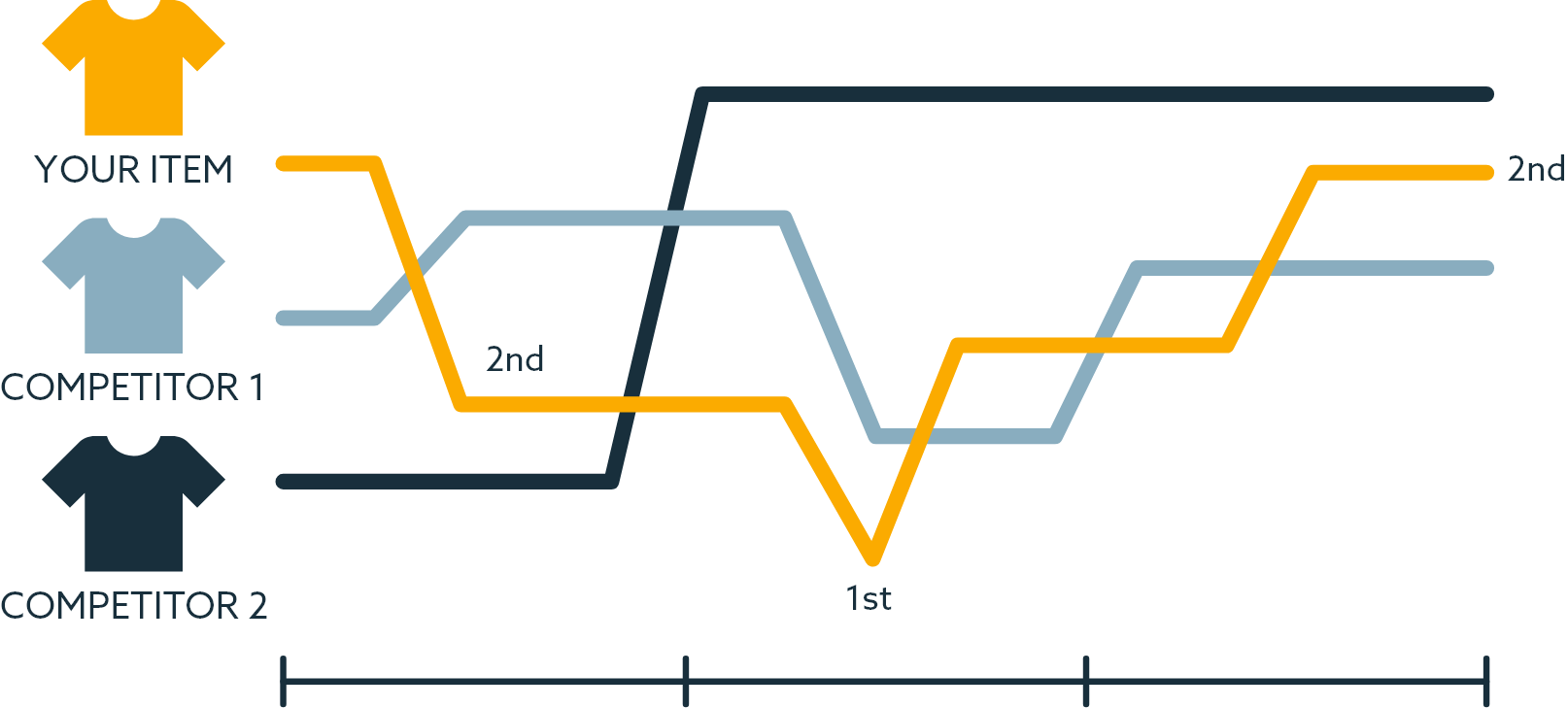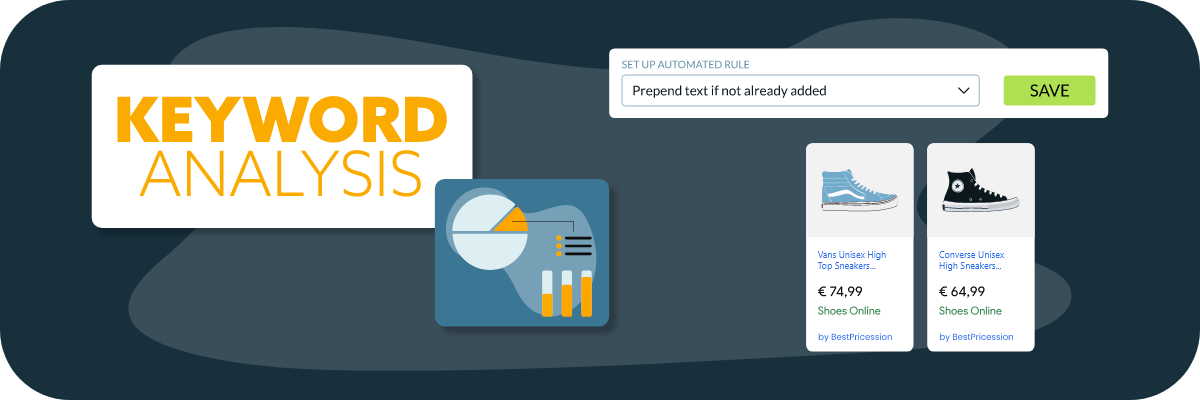Recession-proof your eCommerce business with these 7 tips
Posted on September 30, 2022 (Last Updated: May 29, 2024)
There is no doubt that eCommerce and retail have gone through a lot in the last few years. When the 2020 pandemic took over the world a lot of things changed in consumer behavior.
People started to work from home. They avoided restaurants, bars, theaters, gyms. Consumers switched from shopping in retail stores to online retail. They choose meal deliveries and doorstep pickup. Without a question, eCommerce helped many people get through the pandemic.
And a lot of eCommerce businesses took it as an opportunity to grow. While some of the offline retail businesses, who did not focus on their online presence, needed to change their business models and strategies, in order to stay competitive.
But today we want to talk about a possible recession that everyone is talking about and its impact on online retail.
In this article, we will discuss what today's recession really bears in itself , how it can affect your eCommerce business, and how to come out on the other side in a stronger position.
What is a recession?

A recession is known as a period of temporary economic decline during which trade and industrial activity are reduced, generally identified by a fall in GDP in two successive quarters.
In simple terms, a recession occurs when economic performance declines for several months. A decrease in GDP, higher unemployment rates, lower consumer expenditure, and a high inflation rate - all these are indicators of a recession in the economy.
Is there currently a recession?
If you had been researching, you probably came across a lot of contrasting articles whether recession is coming or not. Where one article can state that recession is not even near, the other will state that it has arrived already or it will approach in near future.
Many economists have been talking about it since 2020, when almost in no time GDP of the EU reached -13.5% and unemployment rates rapidly increased, reaching as high as 7.8%. Even though since then both of these elements have improved and have reached European Union standards, economists and business owners continue to keep an eye out on any changes in the market and world trends
Whether recession is here or just approaching, you should know how it can affect your eCommerce business.
How a recession can affect your eCommerce business
Recessions don't affect everyone the same way. Harry Truman, the 33rd president of the United States, once said: "If your neighbor gets laid off, it's a recession. If you get laid off, it's a depression." The same may be said for how a recession affects medium and large eCommerce businesses.
While recessions can affect businesses differently, depending on their size and type, we still witness some similar difficulties.
Knowing how a recession can affect your eCommerce business will help you to prevent it from going out of business during the next recession. Because forewarned is forearmed.
Here are a few of the biggest effects of the recession on eCommerce businesses:
- Decline in sales. Consumers cut down on their expenditures, which results in lower sales for your business.
- High competition among retailers. When consumer spending declines significantly, there is an increase in competition, due to the high number of eCommerce businesses competing in the same industry and attempting to maintain sales.
- Price increases. Prices may rise as a result of price adjustments made by suppliers and retailers to compensate for the decrease in sales and increase in inflation.
- Less 'buy now, pay later' shopping. With higher interest rates and higher loan criteria, it can be a challenging time to borrow money.
These are the challenges that can affect your business. Face them sooner rather than later, they are coming anyway. You need to keep your eCommerce business going. The only question is: HOW?
How to recession-proof your eCommerce business
Here are 7 different tactics to keep in mind, if you want to recession-proof your eCommerce business.
1. Focus on Customer’s Lifetime Value
For a successful eCommerce brand focusing on the customer lifetime value is crucial. Returning customers are more valuable since they spend 67% more than new ones. You must be aware at this point how important returning clients are to your eCommerce business.
Increasing client retention rates by about 5% can increase your profits by from 25% to up to 95%.
Find the most profitable customer segment for your eCommerce business
Use the Recency, Frequency, Monetary model approach and figure out who your most profitable customers are and then add behavior-based upsell or high-value subscriptions towards them.
Add a free sample to shopping carts as a bonus to customers when they make a purchase. Free samples have been verified to increase sales by as much as 2000%.
Be active on social media
Consumers had been using social media a lot even before the pandemic. And now, they spend most of the day basically glued to one channel or another. And for this reason, social media is the best channel for eCommerce businesses to connect with customers.
Start with the channels where your customers spend time the most.. Here are 7 tips that you can do on social media to be more attractive to your customers:
- Create short informational videos
- Share customer experiences
- Interact with your customers
- Run contests/giveaways
- Encourage customers to use tagging
- Use hashtags
- Use high-quality visuals in your posts.
Develop a reward program
68% of millennials are unlikely to purchase from businesses that do not have a strong reward program. This shows how important reward programs are for eCommerce businesses.
Here are 4 types of reward programs:
- Point-based reward program
- Paid reward program
- Value-based reward program
- Tiered reward program
You should concentrate on highlighting the benefits of your loyalty program. For example, emphasize the specifics of how your consumers can use their points
Remember! Your clients should be able to join the program easily, and it should be simple to understand.
Ask your customers for feedback
You will be able to improve your eCommerce business and also boost customer lifetime value with the feedback you receive from your customers
You need to consider when to reach out to your customer for feedback. Try to avoid intrusive requests.
Here are 5 methods for collecting customer feedback:
- Transactional emails
- Survey emails
- Interviews
- Social media polls
- Pop-up on website
For example, you can set up an exit pop-up when the customer is leaving your website after purchase or send out a transactional email when they have received the product.

2. Analyze demand for your products
Before launching new products or increasing the stock of existing ones, you should always be aware whether there is demand for them.
Analyze competition in your industry
You should take into account anybody who is in the same area and provides comparable goods or services, and also targets the same demographic.
Stay competitive and monitor how your product pricing compares with your competitors by using a Competitor Monitoring tool. Compare your product’s prices against your competitors and find out which ones have the most competitive prices.

Highlight best selling products from your eCommerce business
You can give more screen time to those products that have received high recommendations from your customers. Highlighting these products at the top of your landing pages will build trust for visitors and there is a higher possibility they will purchase these products.
3. Optimize and filter product data feeds for your eCommerce business
Optimizing data feed will make your listings more relevant to your customers' searches. You need to include as much useful information as possible.
Using a feed management tools you can:
- Create dynamic data rules and expressions to optimize and filter your product feeds at scale.
- Enrich product titles and descriptions with keywords and eye-catching features.
- Remove low stock products and non-compliant text from your feed.
- Claim more search engine result page (SERP) real estate by running Dynamic Google Text Ads for your eCommerce products.

4. Sell out slow-selling products
Clear away any items that aren't the best-selling and are occupying shelf space in your eCommerce business. You probably merely make back the wholesale cost, but money in the bank is always more preferable to dust on the shelf.
Here are 4 tips on how you can quickly sell out slow-selling products:
- Offer steep discounts of 35% to 70% on your products.
- When purchasing a more expensive item, include a slow-selling product at a significant discount in order to simultaneously promote two separate goods.
- Place slow-selling products on the homepage and add product badges. This way you will bring extra exposure to these items.
- If your slow-selling product sales can be increased by a specific season or event, launch a promotion that will differentiate you from your competitor.
5. Focus on price optimization
As previously mentioned, in recession times consumers cut down on their expenditure. So, you will need to come up with fresh ideas of how to provide customers additional value right away and stand out from your competitors.
Effective pricing tactics may increase profits and boost sales more quickly than other growth techniques. For every 1% increase in price, eCommerce businesses may raise earnings by 11.1%
Even when there are low revenue periods and sales decrease, you should focus on keeping a positive margin. To achieve it you need to concentrate on price optimization.
Use “charm pricing”
Use charm pricing and decide on a price that ends with 9, for example, €4.99.
"Prices that end with 9" can even outsell lower prices for identical goods. It’s because prices that end with 9 are typically seen as being on sale.
Use “Buy One Get One Free”
Use the Buy One Get One Free promotion to sell out less-demanded goods more quickly.
When people are aware that they will receive something free in return, they are more inclined to buy something or even spend more than they would otherwise.
Highlight “on-sales price”
Put the sale price next to the original price when you launch a sale and display the selling price using different sizes and colors.
When you separate the sale price from the original price using a different color and font, customers can more easily recognize sale products, which can result in more purchases.
These tactics can be beneficial when creating image transformations for your social product ads for ie. Facebook. Image transformations allow you to improve ROAS with better performing product ads.
6. Improve and optimize your website
You can stand out from your competitors not only with price optimization but also by optimizing and improving your website. Here are two critical aspects you should address first of all.
Quicker product page load time
Quicker loading time for your website improves the user experience. Which increases the likelihood that website visitors will make purchases from you.
Did you know that if a page doesn't load in 3 seconds, half of customers will leave the site? And to make matters worse, 80% of them will never return.
Here are 4 things you can do to improve page load time:
- Reduce image size (Utilize server caching)
- Remove broken links
- Choose banners instead of sliders
- Keep pop-ups to a minimum

Improve the mobile experience
Living in this new age of technology you also need to make sure that you can provide a great mobile experience to make it easy for your customers to search and purchase the right products from your eCommerce business. Did you know that in 2020 72.9% of all online sales came through mobile channels?
You want to avoid “Couldn’t find what you were looking for” when your customer is searching for something on your website through their mobile device. Also try to avoid “Content is not supported via the mobile style”.
7. Embrace the omnichannel transition
Be present where shoppers are most likely to make a purchase - when they have an immediate need for your products. With Google LIA you can list your products with local availability and beat the competition by being listed for less.
Listing your products through Google Local Inventory ads, has proven to not only increase sales, but also increase conversion rates and in-store sales.
Be ready for a recession
Even though it is difficult to predict what the future holds for eCommerce, you should be prepared to stay competitive during the recession or other economical challenges. Implementing the suggested steps in this article will boost your eCommerce business success and resilience for the future.
Uncertain about your feed performance?
Get your feed checked with a free WakeupData product feed audit. The feed audit is a systematic way of examining a feed, including product titles, product descriptions, product feed categories, unique IDs and much more.
And if you have any questions about how to send your product data to Google or any other sales or marketing channel - Book a free Demo of the WakeupData platform and have all your questions answered.



